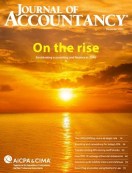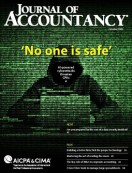- newsletter
- Extra Credit

9 tips for teaching data analytics
Four professors offer insight and advice on this challenging subject.
Please note: This item is from our archives and was published in 2020. It is provided for historical reference. The content may be out of date and links may no longer function.
Related
Level up your accounting class with these tech tools
Get started teaching blockchain
TOPICS
This year the business school at SUNY Geneseo, in Geneseo, N.Y., took two giant steps into the world of data analytics. It created a data analytics minor and is requiring accounting and other students in its School of Business to take a data analytics course.
“There is a lack of professionals right now who understand these skills, and who know how to perform analytics,” said Elizabeth Felski, CPA, Ph.D., an assistant professor of accounting at the university. “And this is a field that is growing so quickly.” She has taught a small master’s-level course (typically 15 to 20 students) on the topic for the past four fall semesters.
Other university accounting programs are also charting their path into the world of data analytics. Northern Illinois University in Dekalb, Ill., began offering an undergraduate course in data analytics and accounting about five years ago, and now offers a graduate course in accounting analytics as well.
“Employers were demanding to see more data and analytics skills among our graduates,” said associate professor Ann Dzuranin, CPA, CGMA, Ph.D., the Dean’s Distinguished Professor of Analytics in Accounting. Dzuranin created the undergraduate course and co-created the graduate course after speaking with representatives from large public accounting firms and companies such as Caterpillar Inc., and McDonald’s Corp. If the university’s accounting department hadn’t made changes, she said, employers would likely have hired computer science students instead of accounting students to fill certain positions.
Though data analytics is becoming an increasingly important subject, it’s one that can be tough to teach for accounting professors, many of whom are attempting to learn it themselves in a rushed period of time. “Even being from a technical background, I struggle,” said Matt Pickard, Ph.D., assistant professor of accounting and analytics at NIU. He holds a doctorate in management of information systems.
“It’s a constant struggle to keep up with advancements,” he noted, and the subject can involve “a huge learning curve.”
Faculty face other challenges when teaching data analytics. When incorporating data analytics into various accounting courses, they must also determine how much data and statistics to include in their syllabuses, Dzuranin said. Instructors also struggle to help accounting students, many of whom are at widely different levels of technical prowess, to grasp Tableau, Power BI, Alteryx, IDEA, and other tools necessary to learn how to analyze data. This problem has been exacerbated by COVID-19, as faculty have been forced to teach students remotely. Instructors also can have difficulty finding real-world data to provide to students, though this data has become more readily available in recent years.
Felski, Dzuranin, Pickard, and Aleksandra Zimmerman, CPA, Ph.D., an assistant professor of auditing at Florida State University in Tallahassee, offer their best tips on teaching this challenging subject:
Get educated. Many outlets exist to help educators learn about this subject. Take advantage of data analytics information and conferences offered by national organizations, or boot camps provided by firms such as KPMG, Deloitte, PwC, and EY. Use these resources “as a way to see what other academics are doing right now,” said Felski. The AICPA also offers certificate programs in data analytics, with discounted pricing for educators.
Don’t expect perfection. If you’re new to teaching analytics, expect the road to be bumpy, and be flexible not only with your students but also with yourself, said Zimmerman.
Start with Excel. Pickard advocates starting with the more familiar Excel, which he calls the “entryway” to data analytics and computer programming. In Excel, students can learn to merge datasets, clean up data, and understand concepts like data aggregation. “Pivot tables are one of the best kept secrets of Excel,” Pickard noted. “You can use them to teach how to answer questions with data.”
Get students comfortable with tech. Start by requiring students to complete tutorials for the analytics software you’re using before giving other assignments, Zimmerman suggested. She assigns IDEA and Tableau tutorials first and then asks “students to submit screenshots indicating completion and answers to tutorial questions,” she said. She next assigns a group case that gives students a chance to “use the software to solve auditing problems.” Zimmerman also assigns LinkedIn Learning videos to help students navigate Tableau. You can also enlist a former student familiar with the assignments to help current students troubleshoot the technology, she said.
Conduct live workshops for students. Dzuranin hosts workshops on Blackboard Collaborate and Zoom where she demonstrates the technology and facilitates group discussion on cases and assignments.
Make classes fun. While teaching remotely poses challenges, the best way to keep students engaged is to make classes interesting and enjoyable. Choose topics or cases on companies that students can relate to, such as Uber, Amazon, and Netflix, Dzuranin suggested.
Zimmerman brings in guest speakers from public accounting firms to talk about how they use software tools on the job. “Students are more excited and motivated when they know it’s being used in practice,” she said.
Find new sources of data. Felski’s students glean data provided by the Big Four firms, such as Deloitte, and tap sites such as Makeover Monday, a U.K.-based website that continually offers new datasets. Her students choose datasets that appeal to them and then redo the visualizations.
Pickard gets datasets from Kaggle.com. Many cities, such as Chicago, have open data portals as well, he said.
Let students interact. While teaching remotely, Dzuranin puts students in small breakout groups to work on data analysis problems. “When we are back in one group, I ask teams to share their screens and walk us though their analyses,” she said. “It’s a great way to get students excited about the material. It’s also a great way for students to share insights and tips.”
Don’t lose sight of critical thinking skills. Developing critical thinking skills can be as important as learning different software programs, noted Dzuranin. “Critical thinking is the foundation because no matter how good a student is at using technology, if they can’t identify the question, the analysis won’t matter,” she observed.
In an analogy he borrowed from colleague Martin Ndicu, Pickard equates teaching data analytics to teaching students to drive, in that it doesn’t matter if they learn to drive in a Volvo or a Ford, but merely that they learn how to drive a car. In other words it doesn’t matter which specific type of software students learn to use, as long as they learn how to be a critical thinker and adopt a digital mindset in the process. “At the end of the day, my class is not about the tool,” he said. “The tool will change in three years.”
— Cheryl Meyer is a freelance writer based in California. To comment on this article or to suggest an idea for another article, contact Courtney Vien, a JofA senior editor, at Courtney.Vien@aicpa-cima.com.



















